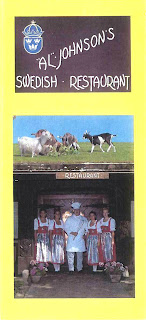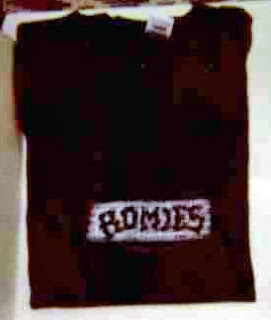Precedential No. 9: Rejecting Parody Defense, TTAB Finds CRACKBERRY Likely to Cause Confusion With and Likely to Dilute BLACKBERRY
The Board sustained Opposer Research in Motion's opposition to registration of the mark CRACKBERRY for various online computer services and assorted clothing items, finding the mark likely to cause confusion with, and likely to dilute, RIM's famous mark BLACKBERRY for handheld devices including smartphones. The likelihood of confusion finding was limited to Applicant's computer services. As to the dilution claim, Applicants invoked the defense of parody under the "fair use" exclusion of Section 43(c), but the Board found that Applicants' use of the CRACKBERRY mark did not merit fair use protection. Research in Motion Limited v. Defining Presence Marketing Group, Inc. and Axel Ltd. Co., 102 USPQ2d 1187 (TTAB 2012) [precedential].

Likelihood of confusion: The Board first considered parody in the Section 2(d) context, observing that while some courts in infringement cases have indicated that "a successful parody seems to make confusion less likely," the First Amendment claim is not as strong at the TTAB, where the issue is right to registration rather than restraint on use, and where the likelihood of confusion "will usually trump any First Amendment concerns."
The Board found that, based on extensive promotion and use, and the role of "this historically-significant device in shaping the culture and technology of the early twenty-first century," the mark BLACKBERRY has become "famous and well known" for hand-held devices and related information technology services.
The involved marks sound alike and their visual similarities outweigh the differences. As to connotation, the public initially adopted the name "Crackberry" to refer to the seemingly addictive nature of the device. In fact, in 2006 the word "Crackberry" was selected as the "Word of the Year" by Webster's New World Dictionary. Thus even prior to Applicants' adoption of the mark CRACKBERRY, the two terms had already developed similar connotations. The fact that consumers informally refer to Blackberry devices by the "Crackberry" moniker further supports the finding that the marks have similar commercial impressions.
And so the Board concluded that the marks are highly similar, and this "critical" duPont factor weighs in favor of Opposer RIM. Indeed, the fame of the BLACKBERRY mark magnifies the significance of the similarities between the marks.
Applicants argued that RIM's goods relate primarily to hand-held devices and related support services, whereas its services concern online chat rooms and retail store services for wireless device accessories. The Board, however, found that Applicants' recited services are "closely related, if not, in some respects, legally identical, to opposer's broadly-stated goods and services." In sum, the Board found a close relationship between opposer's "registered goods and services" and Applicants' services. It agreed with RIM that there is a large overlap in channels of trade; in fact, it seems that Applicants' marketing targets RIM's customers.
As to clothing items, RIM claimed common law rights but failed to prove when its use of BLACKBERRY commenced, and the record did not establish that RIM's goods and services are related to clothing.
And so the Board found confusion likely as to Applicants' services, but dismissed the Section 2(d) claim as to Applicants' clothing items.
Dilution by blurring: The Board found BLACKBERRY to be among the most famous and valuable trademarks in the world, and concluded that BLACKBERRY has become a "household name" that qualifies for protection under Section 43(c). Prior to the filing date of the opposed applications, "BLACKBERRY-branded goods had kicked-off a technology revolution in the United States" and the mark BLACKBERRY had become famous.
The question, then, was whether CRACKBERRY is likely to blur the distinctiveness of the BLACKBERRY mark. The Board reviewed the non-exclusive factors set forth in Section 43(c)(2)(B) of the Lanham Act, and answered the question in the affirmative.
As discussed in the Section 2(d) analysis, the Board found a high degree of similarity between the marks. Applicants did not contest that point, and they conceded that BLACKBERRY is an inherently distinctive mark. Moreover, the record showed that RIM is the exclusive user of the mark BLACKBERRY.
As to the degree of recognition of the mark, the evidence established that BLACKBERRY "became one of the most prominent marks in our digital, wireless culture" and one of the most famous and valuable trademarks in the world.
The record supported the conclusion that Applicants deliberately set out to create an association with the BLACKBERRY mark. The purpose of Applicants' online services is to provide a forum for BLACKBERRY users. Applicants' representative confirmed that Applicants chose their mark because of its strong association with BLACKBERRY. Indeed, Applicants' claim of parody "stands as a admission that applicants intended to create an association with BLACKBERRY."
The evidence also supported the conclusion that there is a strong association between the two terms, from a date well prior to Applicants' adoption of the CRACKBERRY mark.
The Board concluded that all six of the statutory factors support RIM's position and that RIM is "likely to suffer impairment of the distinctiveness of its marks." Hence, the Board found a likelihood of blurring vis-a-vis all of Applicants' goods and services.
Parody defense Applicants' conceded much of RIM's dilution argument, while zealously advancing its claim to a parody defense. Parody is explicitly included as a defense to a claim of dilution under the statutory "fair use" exception in Section 43(c) of the Lanham Act. However, under the terms of that section ("other than as a designation of source"), Applicants' use of CRACKBERRY as a service mark seems to be excluded from the fair use safe harbor.
Nevertheless, Applicants' pointed to the Fourth Circuit's Louis Vuitton decision in arguing that Opposer should have an "increased burden" to demonstrate impairment of the distinctiveness of its mark when a parody is involved. However, the Board agreed with RIM that "the safe harbor provision does not extend the fair use defense to parodies used as a trademark." As in the Louis Vuitton case, the Board assessed the alleged parody as part of the total circumstances in determining whether the claim of dilution by blurring has been made.
The Board found that, in this case, parody does not insulate Applicants from the dilution claim. Two factors are critical: first, the public adopted and popularized "Crackberry" as a nickname for BLACKBERRY devices, and so the term "Crackberry" does not solely, "if at all," reflect Applicants' attempt at parody; second, the closeness of Applicants' services to the goods and services of RIM further undercuts Applicants' parody defense (compare the vast difference between the LOUIS VUITTON handbag and the "Chewy Vuitton" dog toy).
And so the Board found that use of Applicants' mark would blur the distinctiveness of RIM's mark, rather than create "a non-source-identifying fair use parody that should be protectable either under the safe harbor provisions of Section 43(c) (3)(A) or of the First Amendment."
TTABlog comment: If CRACKBERRY means BLACKBERRY and the services are identical or related then how does use of CRACKBERRY diminish the distinctiveness of BLACKBERRY? Doesn't it amplify the strength of BLACKBERRY? Please limit your answer to one bluebook.
What did RIM prove in establishing a dimunition in the distinctiveness of its mark, that Rolex failed to prove when its dilution claim against the ROLL-X table was a failure. [TTABlogged here]? [Again, one bluebook only].
Text Copyright John L. Welch 2012.











































